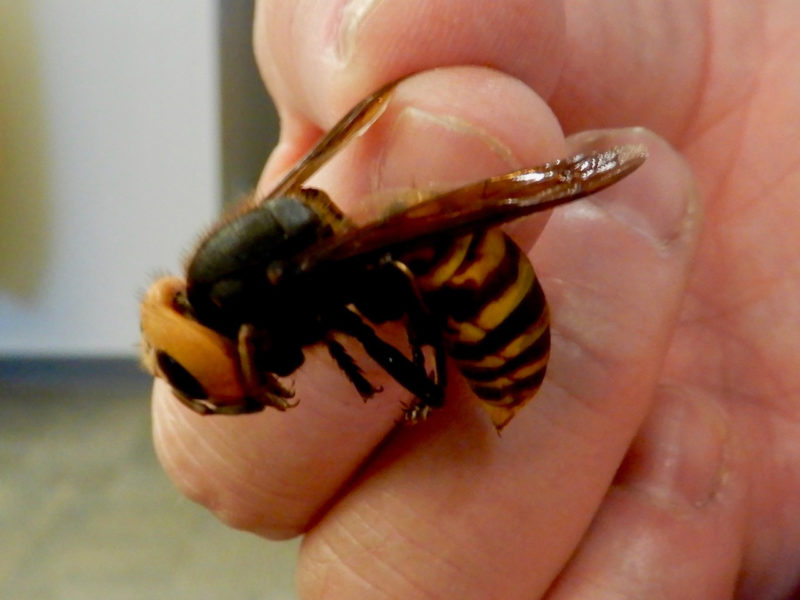Surveillance plans are in place to keep tabs on the Asian Giant Hornet this year, in the hope of preventing it from gaining a foothold in the Fraser Valley and elsewhere.
Nicknamed the “murder hornet” by the media, the Vespa mandarinia can be up to 5 cm in length. A swarm can destroy a bee colony in hours, making it a pest no beekeeper wants hanging around.
While most aggressive late in the season, prior to overwintering, the pest is an invasive species that originated in Asia and unwelcome any time of the year.
The first known nest in North America was destroyed in September 2019, and a second nest was located and destroyed near Blaine last November.
BC officials say this year’s surveillance efforts will include traps in areas where there were previous findings. The work will continue last year’s efforts with comprehensive surveys in Nanaimo and the Cowichan Valley on Vancouver Island, and in the Fraser Valley, from White Rock to Aldergrove.
In addition, outreach and networking will continue with beekeepers, local governments and partner agencies in those areas.
Public awareness is also key. All confirmed reports of the pest in BC have been the result of public vigilance. Six hornet specimens were collected in the Fraser Valley last year with the public’s help.
Surveys on Vancouver Island last year, undertaken in partnership with local beekeepers, resulted in no sightings or specimens being collected. Officials hope that Vancouver Island could be declared hornet-free this year if no specimens are reported.
How the insect travelled to BC is not definitively known, but like other pests from Asia it’s thought to have stowed away in a shipment of goods.
A special joint briefing by agriculture staff from the BC and Washington governments will provide further details on this year’s surveillance plans on both sides of the border this afternoon, March 17.
PHOTO / Paul van Westendorp


 Foodgrains auction sets record
Foodgrains auction sets record